GanosBase incorporates integrated capabilities of storage, querying, analysis, and rendering for new spatio-temporal multi-modal data.
Core components
Geometry engine
The geometry engine provides storage and computing capabilities for vector data such as points, lines, planes, and volumes. It supports various geometry data formats such as SHP, GeoJSON, WKT, and WKB. The geometry engine is fully compatible with PostGIS functions and has definite advantages in spatial data caching, spatial indexing, and spatial parallel computing. It can improve the query and analysis performance of large-scale vector data by more than five times.

Raster engine
The raster engine provides storage and computing capabilities for remote sensing images, digital elevation models (DEMs), and grid data. It is compatible with multiple raster data source formats such as Tiff, HDF4, HDF5, GRIB, and NetCDF. The raster engine provides object-oriented storage capabilities, and supports OSS-based raster data lake scaling. A single row can store a large object of more than 1 TB. The raster engine also provides a variety of basic operators involving raster spatial relationship identification, raster pyramid, raster statistics, raster attributes, raster image processing, raster algebra, as well as business algorithms such as color balancing, mosaic, DEM algorithms, and D8 catchment algorithms. It has distinct advantages in large-scale raster data storage and computing scenarios.

Moving object engine
The moving object engine mainly provides data storage and computing capabilities for moving objects such as people, vehicles, ships, and aircraft. The moving object engine provides native storage, indexing, and segmentation optimization for 4D trajectories (2D or 3D and time). It can add custom attributes to each trajectory point, define spatio-temporal events, efficiently compress and resample tens of billions of trajectory points, and support various native spatio-temporal operators, such as trajectory segmentation, trajectory stay points, trajectory similarity, and spatio-temporal relationship identification.
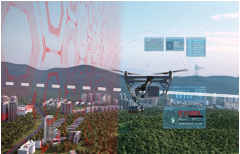
GeomGrid engine
The GeomGrid engine mainly provides spatial grid construction and the grid coding and query capabilities for 2D and 3D spatial objects. The GeomGrid engine supports multiple meshing rules (such as GeoSOT and H3), spatial object encoding, object and code query operations, aggregation and analysis capabilities based on spatial grids, and grid degeneration capabilities.
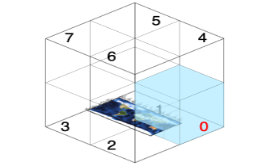
Surface model engine
The surface model engine provides the storage and computing capabilities for semantic 3D data expressed in surface meshes. The surface model engine can process building information modeling (BIM) data, deconstruct and structure models based on semantics, support complex 3D spatial analysis and large-scale federated retrieval, provide model simplification algorithms, and interface with mainstream front-end 3D rendering engines.
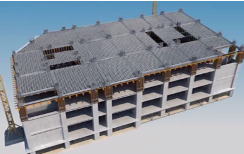
Volume model engine
The volume model engine mainly provides the storage and computing capabilities for anisotropic data characterized by non-homogeneous volume meshes. The volume model engine can process complex geological volume data, support grid truncation at sequence boundaries, support business interpolation algorithms, support complex spatial analysis and large-scale federated retrieval, provide model simplification algorithms, and interface with mainstream front-end 3D rendering engines.
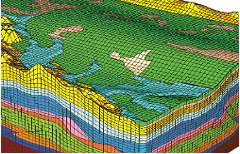
Note
The volume model engine is in the invitational preview phase. To use the model, contact us.
Scene model engine
The scene model engine mainly provides the storage and computing capabilities for refined rendering models. The scene model engine can import models in multiple formats, such as OSGB, glTF/GLB, and OBJ, support algorithms such as space clipping and merging, texture clipping and simplification, provide model simplification algorithms, and interface with mainstream front-end 3D rendering engines. It also supports accurate analysis on visibility and shadow ratios.

Point cloud engine
The point cloud engine mainly provides the storage and computing capabilities for massive point cloud data collected by LADAR systems. The point cloud engine supports block spatial indexing in databases, point cloud compression loss, point cloud spatial query and calculation, point cloud thinning and simplification, and can be connected to mainstream front-end 3D rendering engines.

Path engine
The path engine mainly provides the storage and computing capabilities for topological graph data expressed in points and edges (such as pipe networks and road networks). The path engine can build network topologies based on point and edge models, and support multiple pathfinding algorithms such as TSP, K-shortest, turn restriction, and bidirectional Dijkstra's.
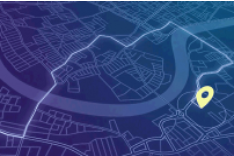
Quick display engine
The quick display engine supports quick rendering of spatial data in GanosBase. For vector and raster data, the quick display engine performs hierarchical aggregation based on spatial characteristics. It uses visibility culling algorithms to build fast display indexes without pre-tiling to support rendering, and local updates of the indexes are supported. For various types of 3D data, the fast display engine constructs rendering levels for 3D models by using model simplification, texture compression, and data stitching, and dynamically generates a display format that the rendering engine can recognize. The quick display engine changes the traditional display mode of pre-tiling and provides integrated visualization and computing capabilities to ensure data verisimilitude.

Atlas is a lightweight spatio-temporal data analysis and visualization service jointly launched by GanosBase and DataV teams. It helps Internet customers quickly discover the value of spatio-temporal data and can assist business location decision-making, scientific research, and other applications. It can also be integrated into user spatio-temporal applications. Atlas is designed to quickly solve the problems with large-scale spatio-temporal data analysis, visualization, and achievement sharing. It provides the following core capabilities:
Atlas pushes down all spatio-temporal data computing to GanosBase to maximize the efficiency of spatio-temporal computing. It uses the dynamic fast display technology in GanosBase to interface with the front-end, plot various types of spatio-temporal data, and truly realize the fast graphing with SQL statements. In addition to direct preview of various types of spatio-temporal data, Atlas can also draw business maps such as cloud maps, trajectory density maps, and grid aggregation maps, and share such maps.
 Elastic Compute Service (ECS)
Elastic Compute Service (ECS)
 Container Compute Service (ACS)
Container Compute Service (ACS)








































